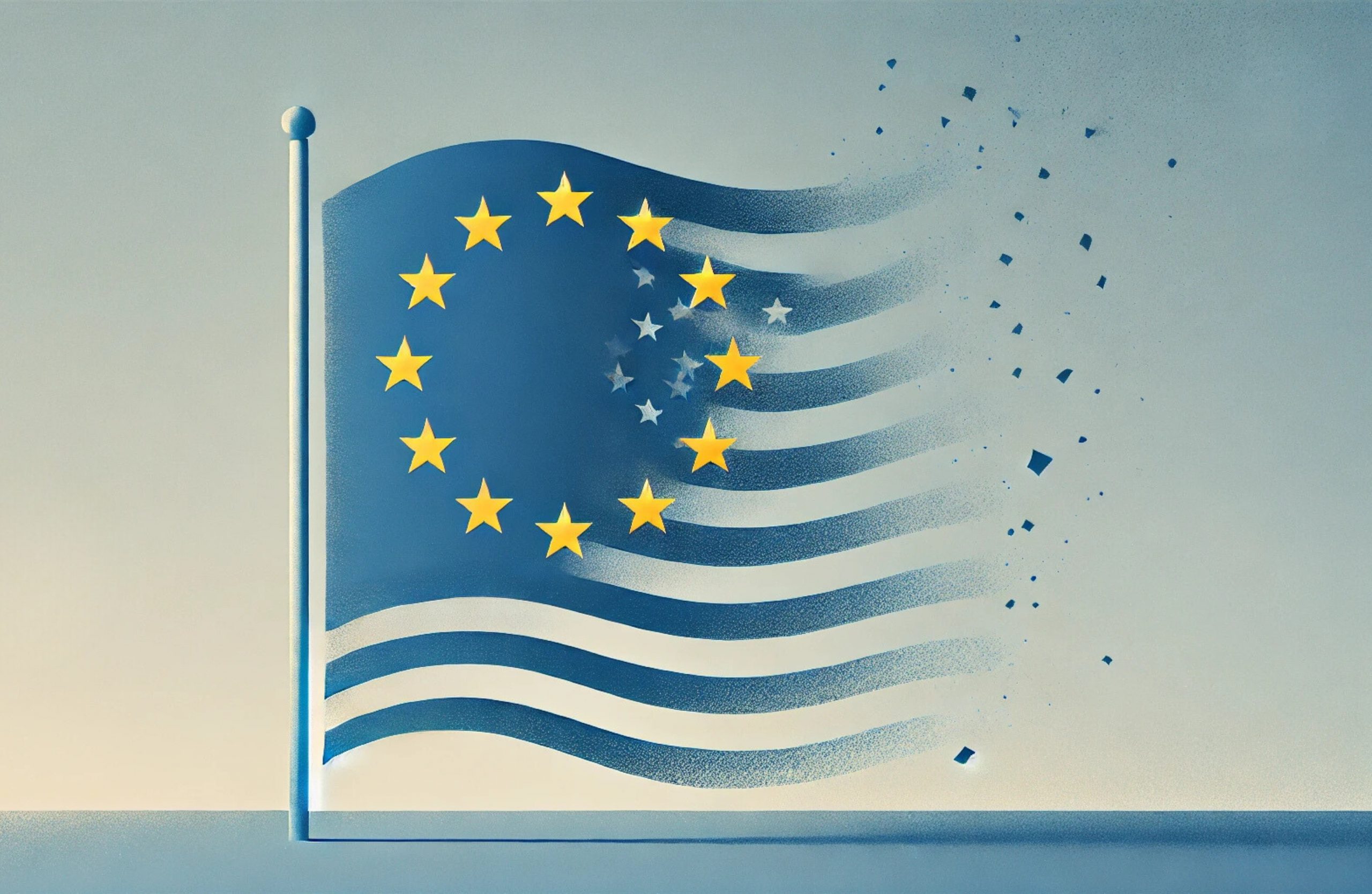
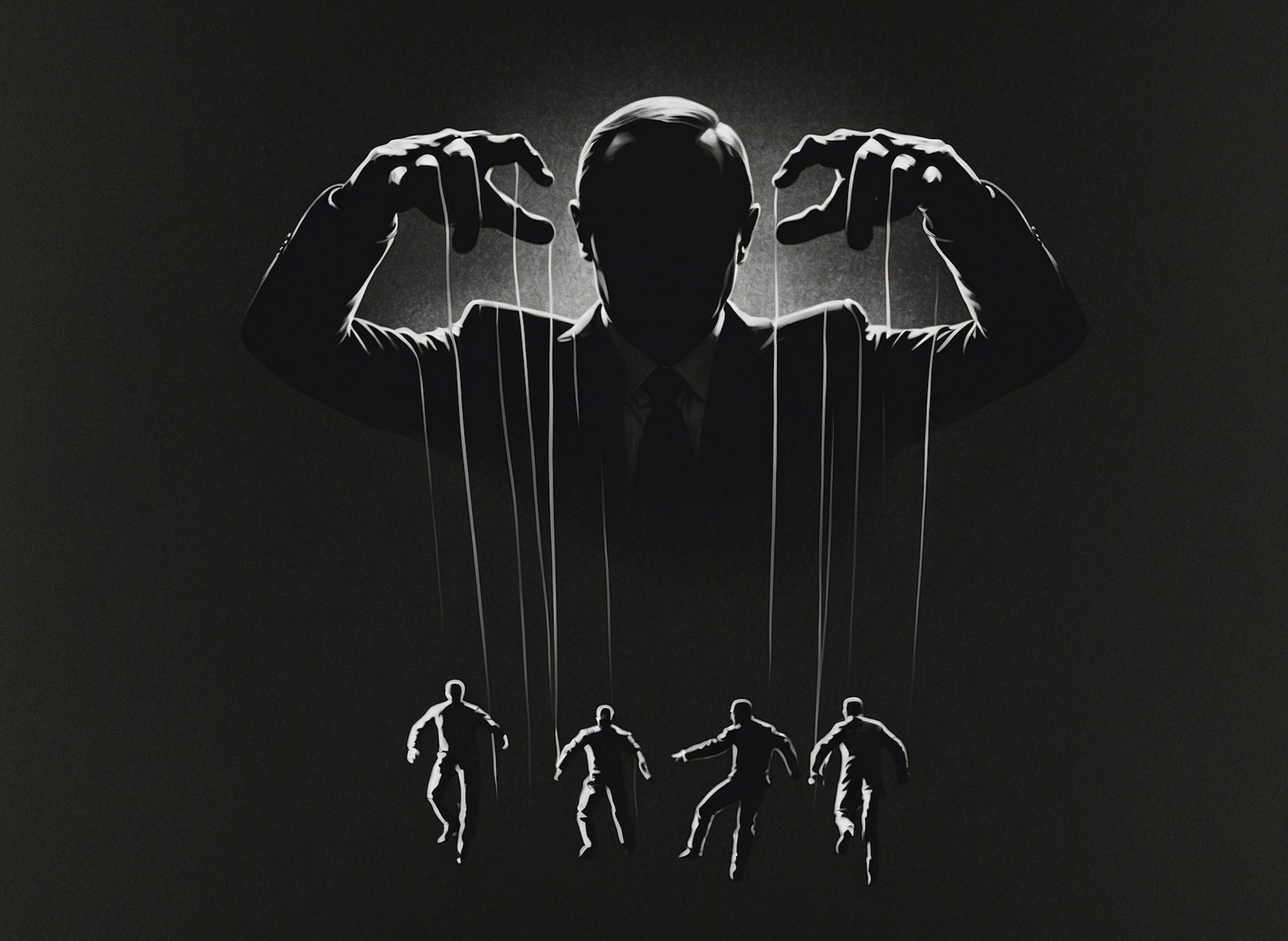
This illustration has been created by AI to use only in this article.
Since Russia’s invasion of Ukraine in February 2022, the symbiotic relationship between Russia’s oligarchs and its executive branch has become central to Western strategies aimed at weakening the country’s wartime economy. The U.S. Global Magnitsky Act of 2016, and the subsequent legislation it inspired across the West, established a framework for targeting the assets of individuals and entities linked to human rights abuses and corruption. These measures include asset freezes, travel bans, and similar tools.
Special attention has been paid in the media to Russia’s oligarchs. While the West was able to freeze around $300 billion USD of the Russian Central Bank’s foreign reserves with relative ease, tracing the wealth of oligarchs is far more complex. Their use of offshore finance, facilitated by opaque ownership structures and complicit Western service providers, has made it difficult to identify beneficial owners and seize assets. Nonetheless, Western authorities have achieved some success in targeting Russia’s offshore empire; the figure most often cited for frozen oligarch-linked assets in the West sits at around $30 billion USD.
Targeting the wealth of these individuals has been deemed particularly important given the relationship Vladimir Putin has cultivated with them since coming to power a quarter century ago. In contrast to the more laissez-faire approach of his predecessor, Boris Yeltsin, Putin built a system in which political loyalty is exchanged for economic privilege, ensuring that Russia’s most powerful business figures remain bound to the presidency.
Oligarchy has been widely discussed in relation to state capture in the new states of the former Soviet Union; Ukraine, for instance, has experienced the rise and fall of more than one oligarchic group since independence. However, oligarchies in Ukraine, Kazakhstan, Russia, and elsewhere have taken varying forms, each possessing idiosyncrasies that complicate direct comparison. Understanding how power functions in contemporary Russia requires a close examination of the relationship Putin has constructed with the oligarchs, how it serves both sides, and how it diverges from the arrangement under his predecessor.
Before diving into Russia’s economic transformation in the 1990s, some terms require clarification. “Liberalisation” refers to the removal of price controls and reforms designed to open the economy to competition, transitioning from a closed autarkic system to a free market. “Privatisation” means transferring state-owned enterprises into private hands. Central to this period was the “Semibankirshina,” the group of seven oligarchs—Boris Berezovsky, Mikhail Khodorkovsky, Mikhail Fridman, Pyotr Aven, Vladimir Gusinsky, Alexander Smolensky, and Vladimir Potanin—who emerged as the dominant beneficiaries of the 1996 loans-for-shares scheme.
According to Berezovsky in a 1996 interview, these seven men controlled about half of the Russian economy. The term itself echoes the “Semiboyarshina,” the seven aristocrats who wielded power during Russia’s 17th-century Time of Troubles, a historical analogy underscoring their outsized influence. The collapse of the Soviet Union in 1991 left Russia and fourteen other new states grappling with the challenges of economic integration into global capitalism. For Russians, private property was a novel concept after decades of socialism, and the nascent legal system struggled to keep pace. Liberalisation was uneven; while rampant arbitrage—buying goods at controlled low prices and selling them higher—was less prevalent in Russia than in some neighbours, it opened pathways for sharp businessmen to accumulate capital.
is MA at the University of Glasgow and KIMEP university in Russian and Eurasian Studies.
Since Russia’s invasion of Ukraine in February 2022, the symbiotic relationship between Russia’s oligarchs and its executive branch has become central to Western strategies aimed at weakening the country’s wartime economy. The U.S. Global Magnitsky Act of 2016, and the subsequent legislation it inspired across the West, established a framework for targeting the assets of individuals and entities linked to human rights abuses and corruption. These measures include asset freezes, travel bans, and similar tools.
Special attention has been paid in the media to Russia’s oligarchs. While the West was able to freeze around $300 billion USD of the Russian Central Bank’s foreign reserves with relative ease, tracing the wealth of oligarchs is far more complex. Their use of offshore finance, facilitated by opaque ownership structures and complicit Western service providers, has made it difficult to identify beneficial owners and seize assets. Nonetheless, Western authorities have achieved some success in targeting Russia’s offshore empire; the figure most often cited for frozen oligarch-linked assets in the West sits at around $30 billion USD.
Targeting the wealth of these individuals has been deemed particularly important given the relationship Vladimir Putin has cultivated with them since coming to power a quarter century ago. In contrast to the more laissez-faire approach of his predecessor, Boris Yeltsin, Putin built a system in which political loyalty is exchanged for economic privilege, ensuring that Russia’s most powerful business figures remain bound to the presidency.
Oligarchy has been widely discussed in relation to state capture in the new states of the former Soviet Union; Ukraine, for instance, has experienced the rise and fall of more than one oligarchic group since independence. However, oligarchies in Ukraine, Kazakhstan, Russia, and elsewhere have taken varying forms, each possessing idiosyncrasies that complicate direct comparison. Understanding how power functions in contemporary Russia requires a close examination of the relationship Putin has constructed with the oligarchs, how it serves both sides, and how it diverges from the arrangement under his predecessor.
Before diving into Russia’s economic transformation in the 1990s, some terms require clarification. “Liberalisation” refers to the removal of price controls and reforms designed to open the economy to competition, transitioning from a closed autarkic system to a free market. “Privatisation” means transferring state-owned enterprises into private hands. Central to this period was the “Semibankirshina,” the group of seven oligarchs—Boris Berezovsky, Mikhail Khodorkovsky, Mikhail Fridman, Pyotr Aven, Vladimir Gusinsky, Alexander Smolensky, and Vladimir Potanin—who emerged as the dominant beneficiaries of the 1996 loans-for-shares scheme.
According to Berezovsky in a 1996 interview, these seven men controlled about half of the Russian economy. The term itself echoes the “Semiboyarshina,” the seven aristocrats who wielded power during Russia’s 17th-century Time of Troubles, a historical analogy underscoring their outsized influence. The collapse of the Soviet Union in 1991 left Russia and fourteen other new states grappling with the challenges of economic integration into global capitalism. For Russians, private property was a novel concept after decades of socialism, and the nascent legal system struggled to keep pace. Liberalisation was uneven; while rampant arbitrage—buying goods at controlled low prices and selling them higher—was less prevalent in Russia than in some neighbours, it opened pathways for sharp businessmen to accumulate capital.
is MA at the University of Glasgow and KIMEP University in Russian and Eurasian Studies.
Privatisation unfolded through various mechanisms: voucher programmes, private sales, and management-employee buyouts, all vulnerable to corruption. Yet it was the loans-for-shares scheme that proved decisive in reshaping Russia’s economic landscape. In 1995–96, the government, desperate for funds, accepted loans from a consortium of banks and businessmen in exchange for stakes in valuable state enterprises as collateral. When the government defaulted, these shares were sold off at drastically undervalued prices, consolidating immense wealth within a small circle of insiders.
This elite group’s rise was inseparable from Boris Yeltsin’s political struggles. His increasingly fragile hold on power made him reliant on the oligarchs’ financial muscle and media influence. The Semibankirshina’s backing was pivotal in the 1996 presidential election, where they campaigned vigorously against Communist candidate Gennady Zyuganov to secure Yeltsin’s victory. This symbiosis of wealth and political power characterised Russia’s 1990s oligarchy: private economic actors pulled the strings. While other groups profited from transition-era opportunities, such as the so-called “Red Directors” who gained through management buyouts, the Semibankirshina’s domination of media, finance, and industry set them apart, effectively crowning them as Russia’s new ruling class.
Boris Berezovsky and Vladimir Potanin symbolize two distinct but equally powerful paths through which Russia’s oligarchs amassed vast wealth during the tumultuous 1990s. Berezovsky built his fortune by exploiting market arbitrage opportunities in the late Soviet period before expanding aggressively into media, banking, and energy, using his close ties to President Yeltsin and the presidential family to consolidate influence. His media empire was instrumental in shaping public opinion during Yeltsin’s 1996 re-election, while he also helped elevate Roman Abramovich through the loans-for-shares acquisition of Sibneft, embedding oligarchic power deeply within the state apparatus.
Potanin’s ascent was rooted in insider knowledge gained from his Soviet-era role in the Ministry of Foreign Trade, where he understood the immense value of state assets like Norilsk Nickel. Before the loans-for-shares scheme was finalised, Potanin secured a critical meeting with Prime Minister Viktor Chernomyrdin in 1995, persuading him of its merits and influencing which assets would be used as collateral. When the government defaulted, Potanin’s investment company ONEXIM acquired a significant stake in Norilsk Nickel. After playing a key role in Yeltsin’s re-election campaign, Potanin was appointed Deputy Prime Minister for Economic Affairs. His wealth, largely tied to Norilsk Nickel, has kept him among Russia’s richest individuals as of 2025.
Throughout the decade, these oligarchs acted with near impunity. The Yeltsin administration was weak and financially unstable, yet oligarchic power shielded the elite even amid crises. In 1998, when the Russian economy was approaching default on sizable loans from the IMF, the oligarchs mobilised to protect their empires. They successfully lobbied Yeltsin for the dismissal of Prime Minister Sergey Kiriyenko’s government, halting reforms and state intervention that threatened their fiscal interests. While ordinary Russians suffered in the ’98 financial crisis, the oligarchs’ grip tightened, and by 1999, popular disillusionment with both the president and the first class of businessmen had paved the way for Vladimir Putin’s rise.
At the turn of the millennium, on New Year’s Eve 1999, Boris Yeltsin announced his resignation. Yeltsin’s health had been ailing for some time, sped up by his notorious alcoholism. Yeltsin’s apologetic speech recognised the need of the state for new faces as the country entered the new millennium. Following the address, Vladimir Putin, who had only recently been appointed as Prime Minister, was made acting President until his electoral success three months later officially secured him the position. The understanding in the ranks of the Semibankirshina was that, as Yeltsin had immunity, and the likes of Berezovsky had assisted with Putin’s selection as successor, it would be business as usual. However, Vladimir Putin was not a puppet, and he was not entering the Kremlin alone.
Putin was quick to centralise the power of the president. His government brought in constitutional reform, allowing the president to dismiss local governors, addressing an issue that had arisen late in Yeltsin’s tenure when some had refused to pay their tax intake to the federal government. To smooth the transition and placate the old guard, Putin’s cabinet was a combination of familiar faces in politics, like Prime Minister Kasyanov, and the new faces of the Siloviki, like Igor Sechin and Nikolai Patrushev. Siloviki is a term used to refer to the group of men who came from a security or military background—predominantly, in the case of Putin’s associates, former KGB officials. Many members of this nascent political force despised the oligarchs, believing they had weakened Russia. Ardent nationalists like Patrushev wanted to see Russia restored to its great power status and saw the oligarchs as an obstacle to this.
Privatisation unfolded through various mechanisms: voucher programmes, private sales, and management-employee buyouts, all vulnerable to corruption. Yet it was the loans-for-shares scheme that proved decisive in reshaping Russia’s economic landscape. In 1995–96, the government, desperate for funds, accepted loans from a consortium of banks and businessmen in exchange for stakes in valuable state enterprises as collateral. When the government defaulted, these shares were sold off at drastically undervalued prices, consolidating immense wealth within a small circle of insiders.
This elite group’s rise was inseparable from Boris Yeltsin’s political struggles. His increasingly fragile hold on power made him reliant on the oligarchs’ financial muscle and media influence. The Semibankirshina’s backing was pivotal in the 1996 presidential election, where they campaigned vigorously against Communist candidate Gennady Zyuganov to secure Yeltsin’s victory. This symbiosis of wealth and political power characterised Russia’s 1990s oligarchy: private economic actors pulled the strings. While other groups profited from transition-era opportunities, such as the so-called “Red Directors” who gained through management buyouts, the Semibankirshina’s domination of media, finance, and industry set them apart, effectively crowning them as Russia’s new ruling class.
Boris Berezovsky and Vladimir Potanin symbolize two distinct but equally powerful paths through which Russia’s oligarchs amassed vast wealth during the tumultuous 1990s. Berezovsky built his fortune by exploiting market arbitrage opportunities in the late Soviet period before expanding aggressively into media, banking, and energy, using his close ties to President Yeltsin and the presidential family to consolidate influence. His media empire was instrumental in shaping public opinion during Yeltsin’s 1996 re-election, while he also helped elevate Roman Abramovich through the loans-for-shares acquisition of Sibneft, embedding oligarchic power deeply within the state apparatus.
Potanin’s ascent was rooted in insider knowledge gained from his Soviet-era role in the Ministry of Foreign Trade, where he understood the immense value of state assets like Norilsk Nickel. Before the loans-for-shares scheme was finalised, Potanin secured a critical meeting with Prime Minister Viktor Chernomyrdin in 1995, persuading him of its merits and influencing which assets would be used as collateral. When the government defaulted, Potanin’s investment company ONEXIM acquired a significant stake in Norilsk Nickel. After playing a key role in Yeltsin’s re-election campaign, Potanin was appointed Deputy Prime Minister for Economic Affairs. His wealth, largely tied to Norilsk Nickel, has kept him among Russia’s richest individuals as of 2025.
Throughout the decade, these oligarchs acted with near impunity. The Yeltsin administration was weak and financially unstable, yet oligarchic power shielded the elite even amid crises. In 1998, when the Russian economy was approaching default on sizable loans from the IMF, the oligarchs mobilised to protect their empires. They successfully lobbied Yeltsin for the dismissal of Prime Minister Sergey Kiriyenko’s government, halting reforms and state intervention that threatened their fiscal interests. While ordinary Russians suffered in the ’98 financial crisis, the oligarchs’ grip tightened, and by 1999, popular disillusionment with both the president and the first class of businessmen had paved the way for Vladimir Putin’s rise.
At the turn of the millennium, on New Year’s Eve 1999, Boris Yeltsin announced his resignation. Yeltsin’s health had been ailing for some time, sped up by his notorious alcoholism. Yeltsin’s apologetic speech recognised the need of the state for new faces as the country entered the new millennium. Following the address, Vladimir Putin, who had only recently been appointed as Prime Minister, was made acting President until his electoral success three months later officially secured him the position. The understanding in the ranks of the Semibankirshina was that, as Yeltsin had immunity, and the likes of Berezovsky had assisted with Putin’s selection as successor, it would be business as usual. However, Vladimir Putin was not a puppet, and he was not entering the Kremlin alone.
Putin was quick to centralise the power of the president. His government brought in constitutional reform, allowing the president to dismiss local governors, addressing an issue that had arisen late in Yeltsin’s tenure when some had refused to pay their tax intake to the federal government. To smooth the transition and placate the old guard, Putin’s cabinet was a combination of familiar faces in politics, like Prime Minister Kasyanov, and the new faces of the Siloviki, like Igor Sechin and Nikolai Patrushev. Siloviki is a term used to refer to the group of men who came from a security or military background—predominantly, in the case of Putin’s associates, former KGB officials. Many members of this nascent political force despised the oligarchs, believing they had weakened Russia. Ardent nationalists like Patrushev wanted to see Russia restored to its great power status and saw the oligarchs as an obstacle to this.
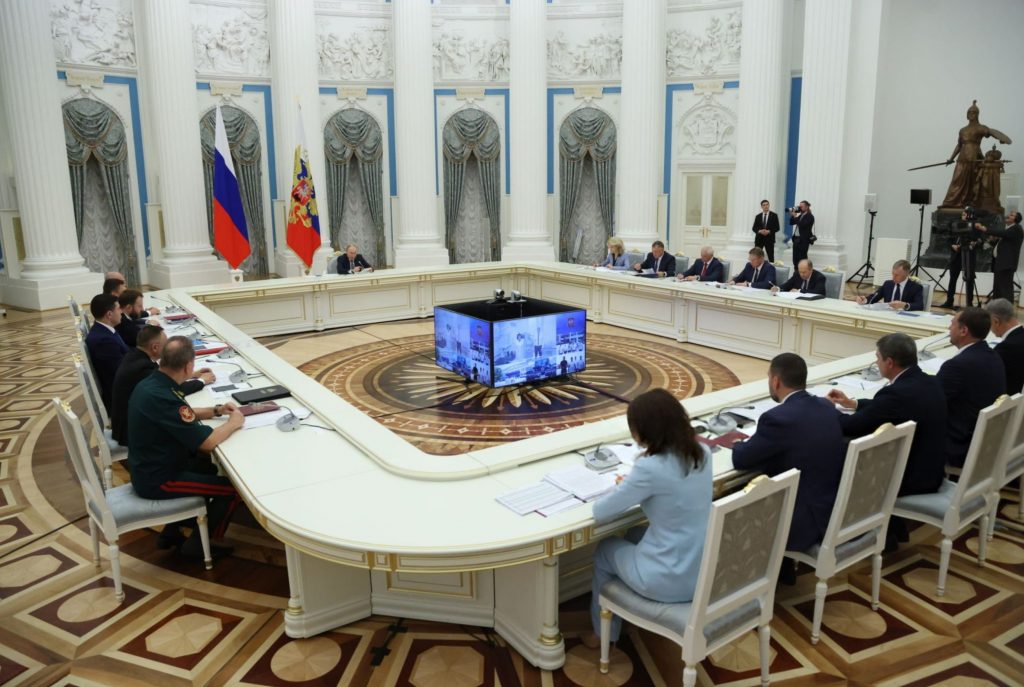
There was slight uneasiness in the oligarch camp. They had thrived during the years of a weak presidency that had seen political and economic power divided amongst multiple actors. Putin had campaigned on breaking the oligarch class and their influence, a sentiment that had a lot of traction with the Russian public. In an interview with the French newspaper Le Figaro, amidst a media storm largely drummed up by Berezovsky, he explained, “the state has a cudgel in its hands that you use to hit just once, but on the head. We haven’t used this cudgel yet. We’ve just brandished it. … [But] the day we get really angry, we won’t hesitate to use it.” Nonetheless, Berezovsky and others still ran on the assumption that it was their man in the Kremlin—after all, they had put him there. Over the course of his first term, Putin would bring the oligarchs to heel, using the state’s “cudgel” to drive two of the Semibankirshina into exile and imprison one in Siberia.
Early in Putin’s first term, Berezovsky used his network ORT to drum up discontent following the Kursk submarine disaster, interviewing the wives and relatives of the ship’s crew and calling out the Kremlin for its inefficacy in launching a rescue/recovery mission. Berezovsky had long enjoyed the independence ORT gave him, making it a voice of protest during the main phase of Russia’s second war in Chechnya in 1999–2000. Berezovsky was slow on the uptake that this sort of dissent would not be tolerated under Putin; his associate Vladimir Gusinsky had already fallen afoul of Putin’s media crackdown. Gusinsky’s network had its offices stormed shortly after Putin’s inauguration.
They had also been critical of the Russian military action in Chechnya, running stories on potential FSB involvement in the Moscow apartment bombings. Gusinsky was held, charged with the embezzlement of millions, and eventually forced to sell his media empire to Gazprom. Berezovsky continued to antagonise Putin, writing him an open letter calling out his dictatorial tendencies and lambasting the presence of all these former KGB associates in the Kremlin. Suddenly, Berezovsky came under massive scrutiny; his car dealership AvtoVaz was investigated for tax avoidance, whilst another case was opened into embezzlement at Aeroflot, in which he was a shareholder.
He was pushed into the same corner as Gusinsky. After being called in for questioning, he fled the country, quickly sold his ORT shares to Roman Abramovich, and was sentenced in absentia. Russia’s new president had shown that he was unwilling to tolerate independent media voices subject to powerful controlling interests that would criticise the Kremlin. Amidst all this, Putin arranged a meeting with Russia’s 21 most powerful tycoons in the Kremlin’s Ekaterinovsky Hall. His dressing down of the oligarchs was televised, and after film crews left, he ordered the oligarchs to stay out of politics.
Building on his efforts to reassert state authority over Russia’s oligarchs, in February 2003, a seminal confrontation took place in the same Ekaterinovsky Hall between Putin and Mikhail Khodorkovsky. Like others in the Semibankirshina, Khodorkovsky had built his fortune largely through the loans-for-shares scheme of the 1990s. As head of Yukos, which would merge with Sibneft later that year to become one of the world’s largest oil producers, Khodorkovsky wielded considerable influence.
Russia’s new president had shown that he was unwilling to tolerate independent media voices subject to powerful controlling interests that would criticise the Kremlin.
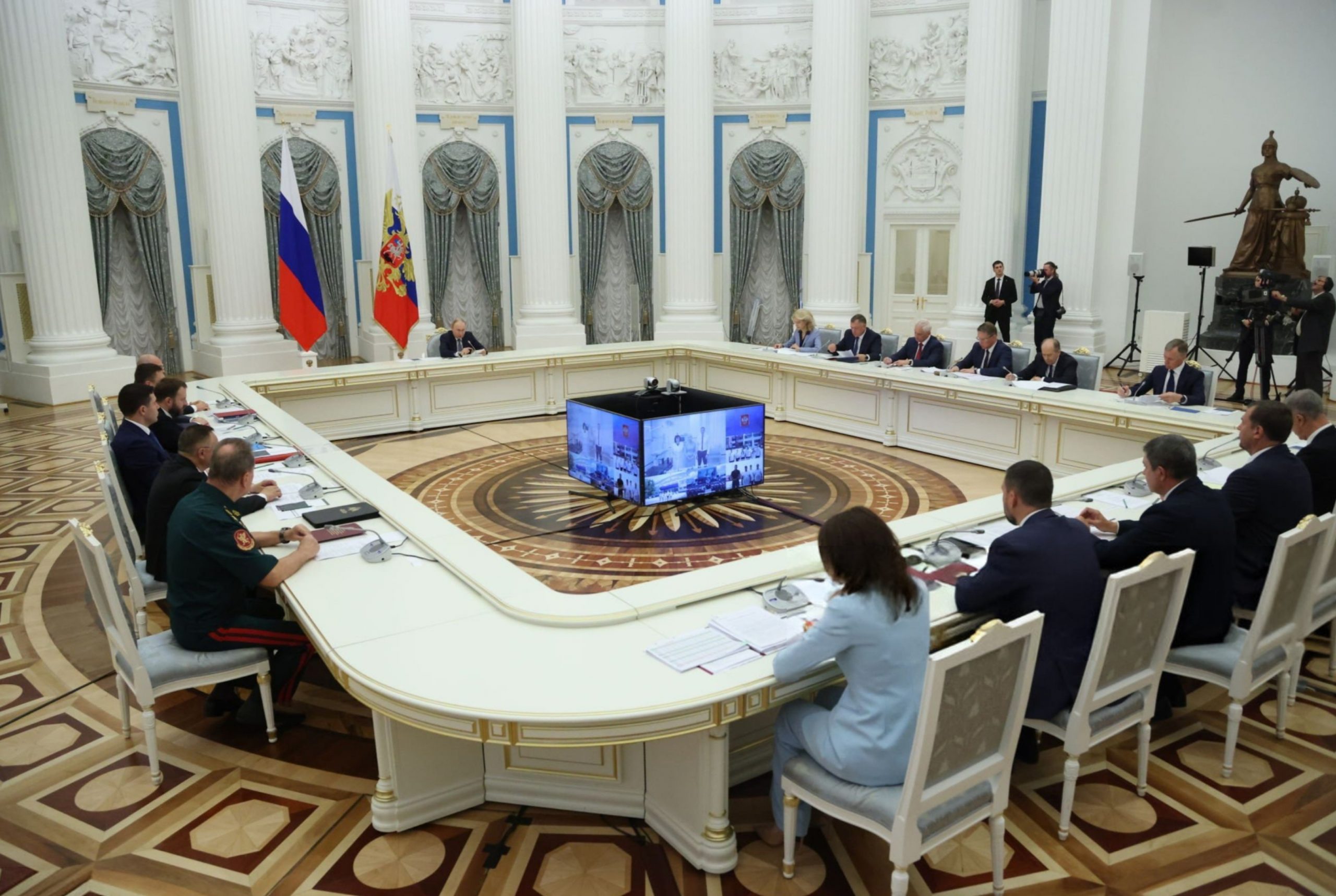
At the Kremlin meeting, he openly criticised the extent of corruption under Putin’s administration, notably questioning why many talented young professionals were drawn to the tax ministry—implying the use of bureaucratic power to pressure businesses. This breach of the unwritten rule that oligarchs should avoid political interference marked a turning point. Khodorkovsky was arrested later that year on charges of fraud and tax evasion, his shares in Yukos seized, and he was sentenced to prison.
More broadly, the Kremlin’s actions reflected a strategic imperative to regain greater control over the energy sector, a cornerstone of Russia’s economic strength. While the Russian State had maintained a gas monopoly through Gazprom, the oil industry had become fragmented during the 1990s, with Rosneft as the largest state-owned company controlling only a small portion. The state had already exerted pressure on other private companies, such as Lukoil, to ensure alignment with government interests. After Yukos was dismantled, its key assets were absorbed by Rosneft, increasing state control to over half of the country’s oil production—reversing much of the privatisation seen just a few years earlier.
If the sources of power had been ambiguous in the late 1990s and early 2000s, no ambiguity remained. The message from the president was clear: the oligarchs keep their wealth at his behest. In some oligarchies, factionalism has seen warring parties drawing in their resources to counteract one another. This would not be tolerated in Putin’s Russia. All wealth is ultimately controlled by the state, and dissent is grounds to have it stripped away.
Following the defeat of the most troublesome oligarchs of the Yeltsin era, Putin shifted focus from confrontation to consolidation, building a new system in which economic privilege was tightly bound to personal loyalty. Those who survived the early 2000s crackdown quickly understood that deference to the Kremlin was essential for survival. While the outward appearance of a technocratic government persisted during Putin’s first term, supported by figures like Prime Minister Mikhail Kasyanov, this façade soon gave way to a new elite drawn from Putin’s inner circle, many of whom had served with him in the KGB or alongside him in St Petersburg.
Although these individuals amassed great wealth and influence, they differed fundamentally from the 1990s oligarchs. The earlier oligarchs had often acted as autonomous power players, occasionally rivalling the state; in contrast, Putin’s oligarchs and so-called minigarchs—new private businessmen and government officials with less wealth—derived their positions entirely from his favour. In this system, power depended on loyalty rather than preceding it.
After consolidating political control, Putin moved swiftly to reclaim control over key sectors of the economy by appointing trusted Siloviki to oversee major state enterprises. Igor Sechin, Putin’s longtime aide and former KGB colleague, was central to this effort. He played a leading role in orchestrating the downfall of Mikhail Khodorkovsky, ensuring the judiciary delivered a verdict favourable to the Kremlin. Sechin then helped Rosneft, the state oil company, absorb Yukos’ most valuable asset, Yuganskneftegaz. Appointed chairman of Rosneft in 2004 and later CEO, Sechin exemplified the new elite—politically loyal, personally connected, and embedded within state structures.
This model was repeated across other major sectors: Russian Railways was handed to Vladimir Yakunin, while Gazprom expanded by acquiring Roman Abramovich’s Sibneft in 2005. Control over energy was not simply about revenue; it was central to reasserting Kremlin authority and geopolitical influence, and Putin ensured it remained in the hands of those whose loyalty was absolute. Alongside these powerful oligarchs, a new class of private businessmen and government officials, sometimes referred to as minigarchs, rose to prominence. Figures like Arkady and Boris Rotenberg, Putin’s childhood judo partners and close allies, expanded their fortunes through state-backed contracts and coercion. Their rise demonstrated how wealth accumulation under Putin remained tightly linked to the president’s patronage.
Endemic corruption within government ministries, where control over procurement in sectors such as healthcare and defence encouraged cronyism and bribery, enabled officials to enjoy lifestyles far beyond their official salaries. Putin’s tolerance of this corruption served a strategic purpose: by turning a blind eye, he ensured that those within the system accumulated compromising information on themselves and each other. This web of mutual vulnerability created powerful leverage for Putin to enforce loyalty and swiftly neutralise anyone threatening the regime. Thus, economic privilege was maintained not only through patronage but also through implicit control and blackmail.
This reordering of Russia’s economy rested on formal appointments and business takeovers but also on an informal, deeply personal system of power and protection, akin to the criminal concept of krisha (roof) that emerged during the chaotic 1990s. Krisha referred to the protection offered to businesses in a criminal racket. In Putin’s Russia, the presidency itself became a national krisha, offering security and privilege to those who pledged absolute fealty. Investigative journalism and whistleblower accounts have exposed how this informal system enriched Putin personally.
Revelations tied top Kremlin officials to Bank Rossiya, widely believed to function as a slush fund, and uncovered the construction of Putin’s lavish Black Sea palace, funded by opaque donations from oligarchs such as Roman Abramovich.These findings reveal a system where power, loyalty, and wealth are so intertwined that the distinction between state and personal property becomes meaningless. It has been widely speculated that Putin is the richest man in the world, and whilst it is difficult to dispute given the wealth he has access to, understanding wealth as the focal point of Putin’s system is somewhat reductive. Control of wealth is vital but, as Mark Galeotti pointed out in his profile on the Russian president, money is a means and not an end. Having his roots in every facet of the Russian economy allows him to be the ultimate patron, doling out economic privilege to loyalists as dividends for continued allegiance.
Before tensions with the West escalated, Russia’s new class of ultra-wealthy businessmen served as informal ambassadors for the Kremlin, helping legitimise Putin’s regime abroad. Up until 2014, weak money laundering regulations and thriving Western service sectors—especially in the UK and its overseas territories—enabled Putin’s oligarchs to embed themselves in the West, protecting their wealth and laundering their reputations. The offshore infrastructure inherited from the British Empire facilitated the discreet movement of capital, while London’s luxury property market, Tier 1 investor visas, and receptive financial environment made integration seamless, all while avoiding scrutiny by capitalising on English jurisprudence.
Wealth protection for Putin and his oligarchs has been made possible by the fluid and secretive world of offshore finance. Authors such as Nicholas Shaxson and Oliver Bullough have documented how the British Empire’s offshore legacy evolved into a network of tax havens, including the British Virgin Islands, Anguilla, and the Cayman Islands. These jurisdictions offer opaque corporate structures that allow elites to hide wealth from both domestic authorities and international regulators.
There was slight uneasiness in the oligarch camp. They had thrived during the years of a weak presidency that had seen political and economic power divided amongst multiple actors. Putin had campaigned on breaking the oligarch class and their influence, a sentiment that had a lot of traction with the Russian public. In an interview with the French newspaper Le Figaro, amidst a media storm largely drummed up by Berezovsky, he explained, “the state has a cudgel in its hands that you use to hit just once, but on the head. We haven’t used this cudgel yet. We’ve just brandished it. … [But] the day we get really angry, we won’t hesitate to use it.” Nonetheless, Berezovsky and others still ran on the assumption that it was their man in the Kremlin—after all, they had put him there. Over the course of his first term, Putin would bring the oligarchs to heel, using the state’s “cudgel” to drive two of the Semibankirshina into exile and imprison one in Siberia.
Early in Putin’s first term, Berezovsky used his network ORT to drum up discontent following the Kursk submarine disaster, interviewing the wives and relatives of the ship’s crew and calling out the Kremlin for its inefficacy in launching a rescue/recovery mission. Berezovsky had long enjoyed the independence ORT gave him, making it a voice of protest during the main phase of Russia’s second war in Chechnya in 1999–2000. Berezovsky was slow on the uptake that this sort of dissent would not be tolerated under Putin; his associate Vladimir Gusinsky had already fallen afoul of Putin’s media crackdown. Gusinsky’s network had its offices stormed shortly after Putin’s inauguration.
They had also been critical of the Russian military action in Chechnya, running stories on potential FSB involvement in the Moscow apartment bombings. Gusinsky was held, charged with the embezzlement of millions, and eventually forced to sell his media empire to Gazprom. Berezovsky continued to antagonise Putin, writing him an open letter calling out his dictatorial tendencies and lambasting the presence of all these former KGB associates in the Kremlin. Suddenly, Berezovsky came under massive scrutiny; his car dealership AvtoVaz was investigated for tax avoidance, whilst another case was opened into embezzlement at Aeroflot, in which he was a shareholder.
He was pushed into the same corner as Gusinsky. After being called in for questioning, he fled the country, quickly sold his ORT shares to Roman Abramovich, and was sentenced in absentia. Russia’s new president had shown that he was unwilling to tolerate independent media voices subject to powerful controlling interests that would criticise the Kremlin. Amidst all this, Putin arranged a meeting with Russia’s 21 most powerful tycoons in the Kremlin’s Ekaterinovsky Hall. His dressing down of the oligarchs was televised, and after film crews left, he ordered the oligarchs to stay out of politics.
Building on his efforts to reassert state authority over Russia’s oligarchs, in February 2003, a seminal confrontation took place in the same Ekaterinovsky Hall between Putin and Mikhail Khodorkovsky. Like others in the Semibankirshina, Khodorkovsky had built his fortune largely through the loans-for-shares scheme of the 1990s. As head of Yukos, which would merge with Sibneft later that year to become one of the world’s largest oil producers, Khodorkovsky wielded considerable influence.
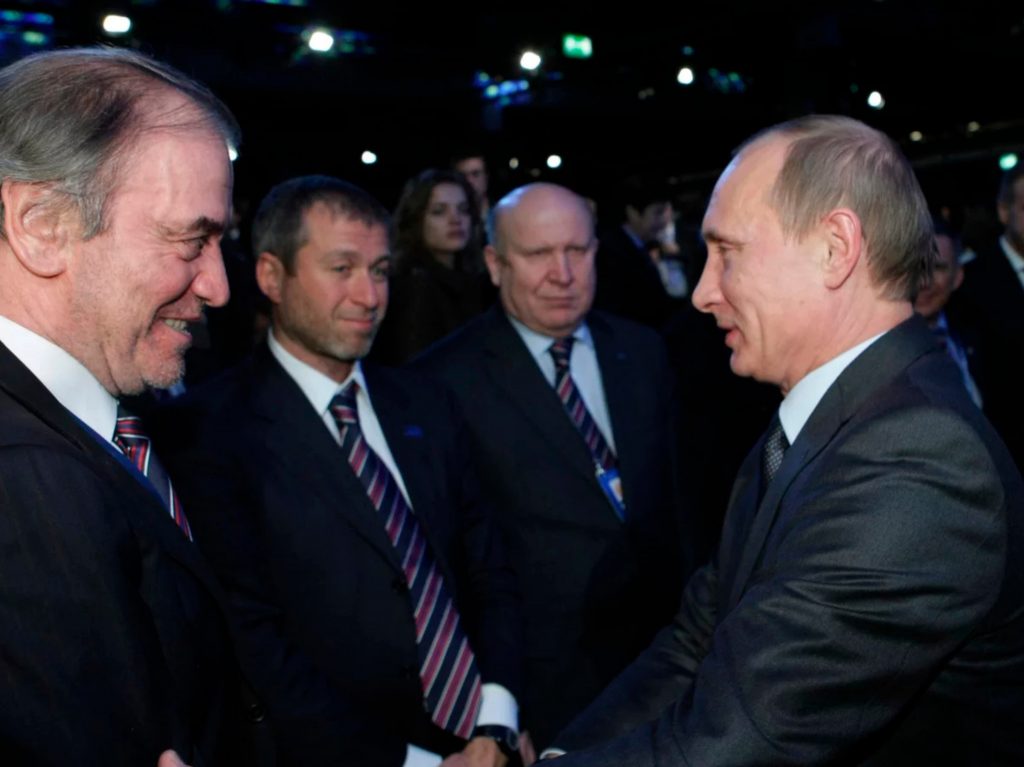
Using shell companies and complex ownership webs, Russian oligarchs have disguised acquisitions ranging from corporate assets to yachts and London mansions. The 2016 Panama Papers leak exposed the scale of Russian offshore wealth. These systems not only insulate Putin’s network from scrutiny but also enable capital to flow into the West in ways that legitimise and embed Kremlin-linked fortunes. While it’s true that some elites use these mechanisms as a hedge against falling out of favour with Putin, their continued use reinforces the broader system of loyalty and mutual interest that sustains his rule.
Thanks to weak regulation and a culture of both witting and unwitting noncompliance, London became a vital platform through which Kremlin-aligned oligarchs laundered their reputations and wealth, acting as informal ambassadors of Putin’s Russia in the process. It is now well documented how popular the London property market has been over the last three decades as a destination for Russian money. In 2015, a Channel 4 documentary, From Russia With Cash, saw undercover reporters pose as a corrupt Russian official and his girlfriend seeking to buy a property in London. Despite clearly identifying as a politically exposed person, the fictional buyer was met with little resistance from estate agents, some of whom encouraged discretion rather than due diligence.
This lax environment helped facilitate the embedding of oligarchs like Roman Abramovich and Oleg Deripaska in elite London society. Deripaska, for instance, is a close associate of former British energy minister Greg Barker, who served as chair on the board of his energy company En+. Alongside real estate, the UK’s Tier 1 Investor Visa scheme served as a legal pathway for wealthy Russians to gain residency. During the scheme’s so-called “blind faith” period between 2008 and 2015, over 700 visas were granted to Russian nationals. These visas offered not just access to the UK but also a veneer of legitimacy and stability for Kremlin-linked businessmen looking to establish themselves in the West.
Meanwhile, London’s financial markets offered an even more powerful form of international validation. In 2006, Rosneft, under the direction of Putin loyalist Igor Sechin, was listed on the London Stock Exchange, not long after acquiring some of the key assets of Yukos through a murky, politically driven process. Despite the controversy surrounding its formation, Rosneft’s IPO was backed by major Western banks, giving it—and by extension, the Kremlin—a commercial seal of approval. Together, these avenues didn’t merely protect private wealth; they helped present Russia as a legitimate, investor-friendly economy while obscuring the extent to which Putin had reasserted control over its key industries.
Oligarch utilisation of English jurisprudence has served as a shield for Putin’s mission to legitimise his regime in the West. The legal traditions of England and Wales have attracted clients from across the globe, including many Russian and post-Soviet oligarchs. Business disputes involving these figures are frequently resolved in English courts, with some of the world’s top lawyers engaged in their cases. By the early 2010s, British media outlets such as The Times noted that Russians comprised the largest group of foreign litigants in the English Commercial Courts. Russian oligarchs’ use of English common law in libel cases has effectively shielded Putin’s inner circle from damaging scrutiny in Western media.
English libel laws, often criticised for favouring plaintiffs, have facilitated “libel tourism,” allowing wealthy litigants to suppress critical reporting. In 2021, Catherine Belton, author of Putin’s People, faced a lawsuit from prominent Kremlin-linked figures including Roman Abramovich, Mikhail Fridman, Petr Aven, and the seemingly ubiquitous state oil giant Rosneft. With the immense financial resources available to these oligarchs, publishers and newspapers often hesitate to release investigative material that might expose Russia’s business elite. Oliver Bullough, a leading journalist on corruption and money laundering, has recounted how editors refused to publish his research on a powerful oligarch out of fear of costly legal repercussions. This dynamic reveals how Putin’s network leverages English jurisprudence not only to confer legitimacy on their affairs but also to protect the regime’s carefully managed image abroad.
Following Russia’s annexation of Crimea in 2014, Western sanctions began to target Putin’s elite, but their early impact was limited. At that stage, Western governments still underestimated how deeply oligarchs’ wealth was bound up with the Kremlin. In March 2014, the U.S. imposed modest sanctions against select regime figures—military-intelligence chiefs like Igor Sergun, pro-war politicians like Senator Nikolai Ryzhkov, and businessmen such as the Rotenberg brothers and Gennady Timchenko. This level of response proved ineffective.
Some sanctioned oligarchs, including Oleg Deripaska, continued to operate in the West through their networks, softening economic pressure on both themselves and, indirectly, on Russia’s broader economy. When sanctions later intensified after the 2022 invasion, banning figures like Roman Abramovich from the UK, it became clear: the oligarchy had no coercive power to challenge Putin. Indeed, Putin has made that clear domestically. Recent elite purges in Russian ministries deliver two messages: loyalty is mandatory, and no one is above the state.
At the Kremlin meeting, he openly criticised the extent of corruption under Putin’s administration, notably questioning why many talented young professionals were drawn to the tax ministry—implying the use of bureaucratic power to pressure businesses. This
breach of the unwritten rule that oligarchs should avoid political interference marked a turning point. Khodorkovsky was arrested later that year on charges of fraud and tax evasion, his shares in Yukos seized, and he was sentenced to prison.
More broadly, the Kremlin’s actions reflected a strategic imperative to regain greater control over the energy sector, a cornerstone of Russia’s economic strength. While the Soviet Union had maintained a gas monopoly through Gazprom, the oil industry had become fragmented during the 1990s, with Rosneft as the largest state-owned company controlling only a small portion. The state had already exerted pressure on other private companies, such as Lukoil, to ensure alignment with government interests. After Yukos was dismantled, its key assets were absorbed by Rosneft, increasing state control to over half of the country’s oil production—reversing much of the privatisation seen just a few years earlier.
If the sources of power had been ambiguous in the late 1990s and early 2000s, no ambiguity remained. The message from the president was clear: the oligarchs keep their wealth at his behest. In some oligarchies, factionalism has seen warring parties drawing in their resources to counteract one another. This would not be tolerated in Putin’s Russia. All wealth is ultimately controlled by the state, and dissent is grounds to have it stripped away.
Following the defeat of the most troublesome oligarchs of the Yeltsin era, Putin shifted focus from confrontation to consolidation, building a new system in which economic privilege was tightly bound to personal loyalty. Those who survived the early 2000s crackdown quickly understood that deference to the Kremlin was essential for survival. While the outward appearance of a technocratic government persisted during Putin’s first term, supported by figures like Prime Minister Mikhail Kasyanov, this façade soon gave way to a new elite drawn from Putin’s inner circle, many of whom had served with him in the KGB or alongside him in St Petersburg.
Although these individuals amassed great wealth and influence, they differed fundamentally from the 1990s oligarchs. The earlier oligarchs had often acted as autonomous power players, occasionally rivalling the state; in contrast, Putin’s oligarchs and so-called minigarchs—new private businessmen and government officials with less wealth—derived their positions entirely from his favour. In this system, power depended on loyalty rather than preceding it.
After consolidating political control, Putin moved swiftly to reclaim control over key sectors of the economy by appointing trusted Siloviki to oversee major state enterprises. Igor Sechin, Putin’s longtime aide and former KGB colleague, was central to this effort. He played a leading role in orchestrating the downfall of Mikhail Khodorkovsky, ensuring the judiciary delivered a verdict favourable to the Kremlin. Sechin then helped Rosneft, the state oil company, absorb Yukos’ most valuable asset, Yuganskneftegaz. Appointed chairman of Rosneft in 2004 and later CEO, Sechin exemplified the new elite—politically loyal, personally connected, and embedded within state structures.
This model was repeated across other major sectors: Russian Railways was handed to Vladimir Yakunin, while Gazprom expanded by acquiring Roman Abramovich’s Sibneft in 2005. Control over energy was not simply about revenue; it was central to reasserting Kremlin authority and geopolitical influence, and Putin ensured it remained in the hands of those whose loyalty was absolute. Alongside these powerful oligarchs, a new class of private businessmen and government officials, sometimes referred to as minigarchs, rose to prominence. Figures like Arkady and Boris Rotenberg, Putin’s childhood judo partners and close allies, expanded their fortunes through state-backed contracts and coercion. Their rise demonstrated how wealth accumulation under Putin remained tightly linked to the president’s patronage.
Endemic corruption within government ministries, where control over procurement in sectors such as healthcare and defence encouraged cronyism and bribery, enabled officials to enjoy lifestyles far beyond their official salaries. Putin’s tolerance of this corruption served a strategic purpose: by turning a blind eye, he ensured that those within the system accumulated compromising information on themselves and each other. This web of mutual vulnerability created powerful leverage for Putin to enforce loyalty and swiftly neutralise anyone threatening the regime. Thus, economic privilege was maintained not only through patronage but also through implicit control and blackmail.
This reordering of Russia’s economy rested on formal appointments and business takeovers but also on an informal, deeply personal system of power and protection, akin to the criminal concept of krisha (roof) that emerged during the chaotic 1990s. Krisha referred to the protection offered to businesses in a criminal racket. In Putin’s Russia, the presidency itself became a national krisha, offering security and privilege to those who pledged absolute fealty. Investigative journalism and whistleblower accounts have exposed how this informal system enriched Putin personally.
Revelations tied top Kremlin officials to Bank Rossiya, widely believed to function as a slush fund, and uncovered the construction of Putin’s lavish Black Sea palace, funded by opaque donations from oligarchs such as Roman Abramovich.These findings reveal a system where power, loyalty, and wealth are so intertwined that the distinction between state and personal property becomes meaningless. It has been widely speculated that Putin is the richest man in the world, and whilst it is difficult to dispute given the wealth he has access to, understanding wealth as the focal point of Putin’s system is somewhat reductive. Control of wealth is vital but, as Mark Galeotti pointed out in his profile on the Russian president, money is a means and not an end. Having his roots in every facet of the Russian economy allows him to be the ultimate patron, doling out economic privilege to loyalists as dividends for continued allegiance.
Before tensions with the West escalated, Russia’s new class of ultra-wealthy businessmen served as informal ambassadors for the Kremlin, helping legitimise Putin’s regime abroad. Up until 2014, weak money laundering regulations and thriving Western service sectors—especially in the UK and its overseas territories—enabled Putin’s oligarchs to embed themselves in the West, protecting their wealth and laundering their reputations. The offshore infrastructure inherited from the British Empire facilitated the discreet movement of capital, while London’s luxury property market, Tier 1 investor visas, and receptive financial environment made integration seamless, all while avoiding scrutiny by capitalising on English jurisprudence.
Wealth protection for Putin and his oligarchs has been made possible by the fluid and secretive world of offshore finance. Authors such as Nicholas Shaxson and Oliver Bullough have documented how the British Empire’s offshore legacy evolved into a network of tax havens, including the British Virgin Islands, Anguilla, and the Cayman Islands. These jurisdictions offer opaque corporate structures that allow elites to hide wealth from both domestic authorities and international regulators.
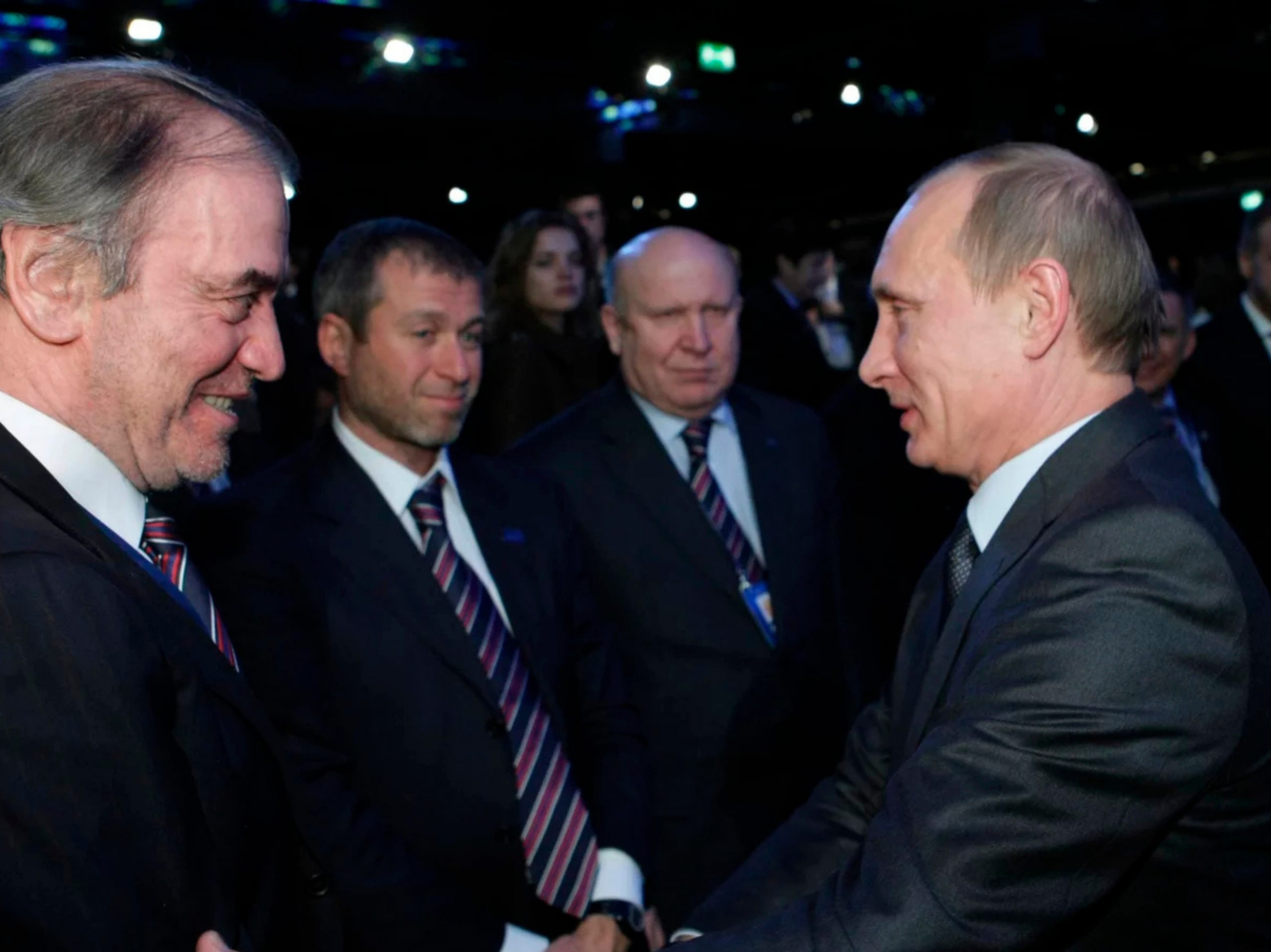
Using shell companies and complex ownership webs, Russian oligarchs have disguised acquisitions ranging from corporate assets to yachts and London mansions. The 2016 Panama Papers leak exposed the scale of Russian offshore wealth. These systems not only insulate Putin’s network from scrutiny but also enable capital to flow into the West in ways that legitimise and embed Kremlin-linked fortunes. While it’s true that some elites use these mechanisms as a hedge against falling out of favour with Putin, their continued use reinforces the broader system of loyalty and mutual interest that sustains his rule.
Thanks to weak regulation and a culture of both witting and unwitting noncompliance, London became a vital platform through which Kremlin-aligned oligarchs laundered their reputations and wealth, acting as informal ambassadors of Putin’s Russia in the process. It is now well documented how popular the London property market has been over the last three decades as a destination for Russian money. In 2015, a Channel 4 documentary, From Russia With Cash, saw undercover reporters pose as a corrupt Russian official and his girlfriend seeking to buy a property in London. Despite clearly identifying as a politically exposed person, the fictional buyer was met with little resistance from estate agents, some of whom encouraged discretion rather than due diligence.
This lax environment helped facilitate the embedding of oligarchs like Roman Abramovich and Oleg Deripaska in elite London society. Deripaska, for instance, is a close associate of former British energy minister Greg Barker, who served as chair on the board of his energy company En+. Alongside real estate, the UK’s Tier 1 Investor Visa scheme served as a legal pathway for wealthy Russians to gain residency. During the scheme’s so-called “blind faith” period between 2008 and 2015, over 700 visas were granted to Russian nationals. These visas offered not just access to the UK but also a veneer of legitimacy and stability for Kremlin-linked businessmen looking to establish themselves in the West.
Meanwhile, London’s financial markets offered an even more powerful form of international validation. In 2006, Rosneft, under the direction of Putin loyalist Igor Sechin, was listed on the London Stock Exchange, not long after acquiring some of the key assets of Yukos through a murky, politically driven process. Despite the controversy surrounding its formation, Rosneft’s IPO was backed by major Western banks, giving it—and by extension, the Kremlin—a commercial seal of approval. Together, these avenues didn’t merely protect private wealth; they helped present Russia as a legitimate, investor-friendly economy while obscuring the extent to which Putin had reasserted control over its key industries.
Oligarch utilisation of English jurisprudence has served as a shield for Putin’s mission to legitimise his regime in the West. The legal traditions of England and Wales have attracted clients from across the globe, including many Russian and post-Soviet oligarchs. Business disputes involving these figures are frequently resolved in English courts, with some of the world’s top lawyers engaged in their cases. By the early 2010s, British media outlets such as The Times noted that Russians comprised the largest group of foreign litigants in the English Commercial Courts. Russian oligarchs’ use of English common law in libel cases has effectively shielded Putin’s inner circle from damaging scrutiny in Western media.
English libel laws, often criticised for favouring plaintiffs, have facilitated “libel tourism,” allowing wealthy litigants to suppress critical reporting. In 2021, Catherine Belton, author of Putin’s People, faced a lawsuit from prominent Kremlin-linked figures including Roman Abramovich, Mikhail Fridman, Petr Aven, and the seemingly ubiquitous state oil giant Rosneft. With the immense financial resources available to these oligarchs, publishers and newspapers often hesitate to release investigative material that might expose Russia’s business elite. Oliver Bullough, a leading journalist on corruption and money laundering, has recounted how editors refused to publish his research on a powerful oligarch out of fear of costly legal repercussions. This dynamic reveals how Putin’s network leverages English jurisprudence not only to confer legitimacy on their affairs but also to protect the regime’s carefully managed image abroad.
Following Russia’s annexation of Crimea in 2014, Western sanctions began to target Putin’s elite, but their early impact was limited. At that stage, Western governments still underestimated how deeply oligarchs’ wealth was bound up with the Kremlin. In March 2014, the U.S. imposed modest sanctions against select regime figures—military-intelligence chiefs like Igor Sergun, pro-war politicians like Senator Nikolai Ryzhkov, and businessmen such as the Rotenberg brothers and Gennady Timchenko. This level of response proved ineffective.
Some sanctioned oligarchs, including Oleg Deripaska, continued to operate in the West through their networks, softening economic pressure on both themselves and, indirectly, on Russia’s broader economy. When sanctions later intensified after the 2022 invasion, banning figures like Roman Abramovich from the UK, it became clear: the oligarchy had no coercive power to challenge Putin. Indeed, Putin has made that clear domestically. Recent elite purges in Russian ministries deliver two messages: loyalty is mandatory, and no one is above the state.
The embeddedness of many Russian oligarchs and their businesses in Western financial systems allowed them to circumvent sanctions following the annexation of Crimea. Oleg Deripaska, once
Russia’s richest man, exemplifies this dynamic. Deripaska controlled En+, an energy company, as well as Rusal, the world’s second-largest aluminium producer. Both he and his businesses were sanctioned by the U.S. government in 2018 due to their Kremlin ties in light of Russia’s ongoing support of separatist forces in Ukraine.
However, Deripaska maintained deep connections within the British political establishment, having attended parties with figures like George Osborne and Lord Mandelson, the current British Ambassador to the U.S., and enjoying a close association with Greg Barker, a former British Energy Minister who served as Chairman of En+’s board. In 2019, Lord Barker successfully negotiated with the U.S. government to lift sanctions on En+ through a restructuring of ownership and voting rights.
In the process, Barker received a $5.9 million bonus alongside his $1.9 million salary. While Deripaska was forced to relinquish some control, the deal likely pleased Putin, as it enabled continued trade for a major Russian company. The Deripaska case reflects a broader pattern in which Western political and commercial networks, driven by personal ties and financial interests, have at times undermined the political establishment’s sanction efforts. This problematic dynamic has allowed the Kremlin’s elite to sustain their wealth and influence despite international attempts to isolate them.
In 2022, this dynamic shifted. Russia’s full-scale invasion of Ukraine intensified and broadened sanctions regimes across the West. Oligarchs who had long evaded scrutiny were suddenly targeted. Lord Barker resigned as Chair of En+, recognising that the optics of maintaining leadership of a major Russian company had become untenable. Roman Abramovich, after successfully laundering his reputation in the UK for two decades, was finally sanctioned by the UK government. Across Europe, individuals like Igor Sechin, head of Rosneft, had luxury properties seized. Media discussions soon turned to whether financial pressure on Russia’s elite could translate into political pressure on Putin himself. However, this demonstrated a fundamental misunderstanding of how Putin’s Russia operates.
Loyalty is the true currency in Putin’s system, and expecting oligarchs who owe their success to Kremlin patronage to turn against him is naïve. Sanctions have arguably increased these individuals’ dependence on the regime, as Western safe havens close off. While a few, such as Oleg Tinkov, who renounced his Russian citizenship and denounced Putin in 2022, have distanced themselves, they remain exceptions. For most, there is little incentive to break loyalty, especially when vast wealth is protected offshore with the aid of compliant intermediaries. For example, Roman Abramovich transferred majority stakes in trusts worth approximately $4 billion to family members in Jersey and Cyprus, shielding his assets from sanctions. As a result, despite the intensified Western measures, the impact on Russia’s wartime economy appears limited.
The arrest of Deputy Defense Minister Timur Ivanov and the dismissal of Sergei Shoigu underscored a deeper truth of Putin’s system: loyalty alone does not ensure survival—continued usefulness is equally vital. By 2024, Russia’s Ministry of Defense had become a lightning rod for criticism, with growing discontent over the country’s stalled progress on the Ukrainian front. Prominent voices within Russia’s war machine, including the late Yevgeny Prigozhin and Chechen leader Ramzan Kadyrov, had openly condemned the ministry’s inefficiency and strategic failures.
This mounting pressure made the Defence Ministry an obvious target for a high-profile purge. Ivanov became the face of this purge. In April 2024, he was arrested on charges of embezzling approximately $49 million. In July 2025, he was sentenced to 13 years in a penal colony, with $32 million in assets seized. His fate delivered a clear message to the elite: proximity to power doesn’t offer protection if one becomes expendable. Whether due to incompetence, scandal, or simply bad optics, Putin’s system ensures that even loyal insiders can be discarded to preserve the regime’s strength. Putin’s wartime regime has ensured that external attempts to destabilise it through economic sanctions are tempered by an elite structure built on absolute authority, conditional privilege, and a cutthroat calculus of utility.
Vladimir Putin has fundamentally remoulded Russia’s oligarchy to serve the presidency. He inverted the 1990s system, using state power to dominate wealth rather than being dominated by it. This transformation entrenched his regime domestically and extended Russian influence abroad, at least until geopolitical isolation set in.Western hopes that sanctions might pressure Putin through his elite have largely faded. Such a strategy might have worked under Yeltsin, but Putin’s crackdown on the Semibankirshina and his consolidation of power stripped oligarchs of autonomy, making their fortunes contingent on loyalty, not leverage.
Looking ahead, Putin’s successor will inherit a highly centralised, deeply personalist system—one where political survival and economic privilege are inseparable. Whether they preserve this model, reworking it for their own ends with the presidency continuing to function as the source of patronage, or take on the hierarchy Putin has built will determine the future shape of Russian power and, subsequently, Russian foreign policy.
The presidency itself became a national krisha, offering security and privilege to those who pledged absolute fealty.
The embeddedness of many Russian oligarchs and their businesses in Western financial systems allowed them to circumvent sanctions following the annexation of Crimea. Oleg Deripaska, once Russia’s richest man, exemplifies this dynamic. Deripaska controlled En+, an energy company, as well as Rusal, the world’s second-largest aluminium producer. Both he and his businesses were sanctioned by the U.S. government in 2018 due to their Kremlin ties in light of Russia’s ongoing support of separatist forces in Ukraine.
However, Deripaska maintained deep connections within the British political establishment, having attended parties with figures like George Osborne and Lord Mandelson, the current British Ambassador to the U.S., and enjoying a close association with Greg Barker, a former British Energy Minister who served as Chairman of En+’s board. In 2019, Lord Barker successfully negotiated with the U.S. government to lift sanctions on En+ through a restructuring of ownership and voting rights.
In the process, Barker received a $5.9 million bonus alongside his $1.9 million salary. While Deripaska was forced to relinquish some control, the deal likely pleased Putin, as it enabled continued trade for a major Russian company. The Deripaska case reflects a broader pattern in which Western political and commercial networks, driven by personal ties and financial interests, have at times undermined the political establishment’s sanction efforts. This problematic dynamic has allowed the Kremlin’s elite to sustain their wealth and influence despite international attempts to isolate them.
In 2022, this dynamic shifted. Russia’s full-scale invasion of Ukraine intensified and broadened sanctions regimes across the West. Oligarchs who had long evaded scrutiny were suddenly targeted. Lord Barker resigned as Chair of En+, recognising that the optics of maintaining leadership of a major Russian company had become untenable. Roman Abramovich, after successfully laundering his reputation in the UK for two decades, was finally sanctioned by the UK government. Across Europe, individuals like Igor Sechin, head of Rosneft, had luxury properties seized. Media discussions soon turned to whether financial pressure on Russia’s elite could translate into political pressure on Putin himself. However, this demonstrated a fundamental misunderstanding of how Putin’s Russia operates.
Loyalty is the true currency in Putin’s system, and expecting oligarchs who owe their success to Kremlin patronage to turn against him is naïve. Sanctions have arguably increased these individuals’ dependence on the regime, as Western safe havens close off. While a few, such as Oleg Tinkov, who renounced his Russian citizenship and denounced Putin in 2022, have distanced themselves, they remain exceptions. For most, there is little incentive to break loyalty, especially when vast wealth is protected offshore with the aid of compliant intermediaries. For example, Roman Abramovich transferred majority stakes in trusts worth approximately $4 billion to family members in Jersey and Cyprus, shielding his assets from sanctions. As a result, despite the intensified Western measures, the impact on Russia’s wartime economy appears limited.
The arrest of Deputy Defense Minister Timur Ivanov and the dismissal of Sergei Shoigu underscored a deeper truth of Putin’s system: loyalty alone does not ensure survival—continued usefulness is equally vital. By 2024, Russia’s Ministry of Defense had become a lightning rod for criticism, with growing discontent over the country’s stalled progress on the Ukrainian front. Prominent voices within Russia’s war machine, including the late Yevgeny Prigozhin and Chechen leader Ramzan Kadyrov, had openly condemned the ministry’s inefficiency and strategic failures.
This mounting pressure made the Defence Ministry an obvious target for a high-profile purge. Ivanov became the face of this purge. In April 2024, he was arrested on charges of embezzling approximately $49 million. In July 2025, he was sentenced to 13 years in a penal colony, with $32 million in assets seized. His fate delivered a clear message to the elite: proximity to power doesn’t offer protection if one becomes expendable. Whether due to incompetence, scandal, or simply bad optics, Putin’s system ensures that even loyal insiders can be discarded to preserve the regime’s strength. Putin’s wartime regime has ensured that external attempts to destabilise it through economic sanctions are tempered by an elite structure built on absolute authority, conditional privilege, and a cutthroat calculus of utility.
Vladimir Putin has fundamentally remoulded Russia’s oligarchy to serve the presidency. He inverted the 1990s system, using state power to dominate wealth rather than being dominated by it. This transformation entrenched his regime domestically and extended Russian influence abroad, at least until geopolitical isolation set in.Western hopes that sanctions might pressure Putin through his elite have largely faded. Such a strategy might have worked under Yeltsin, but Putin’s crackdown on the Semibankirshina and his consolidation of power stripped oligarchs of autonomy, making their fortunes contingent on loyalty, not leverage.
Looking ahead, Putin’s successor will inherit a highly centralised, deeply personalist system—one where political survival and economic privilege are inseparable. Whether they preserve this model, reworking it for their own ends with the presidency continuing to function as the source of patronage, or take on the hierarchy Putin has built will determine the future shape of Russian power and, subsequently, Russian foreign policy.
Recommended
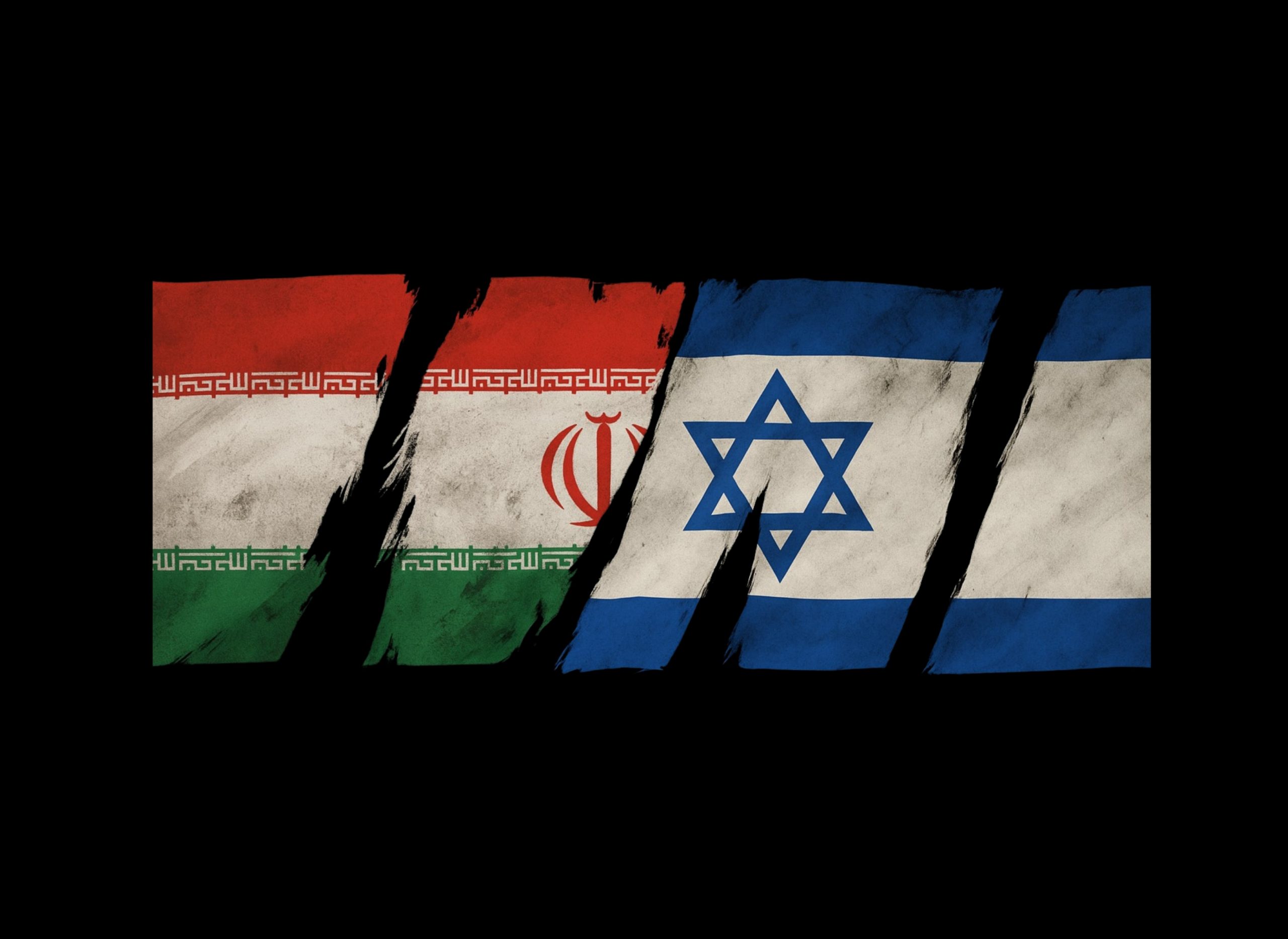
How Two Adversaries Legitimize Power Through Endless Confrontation?
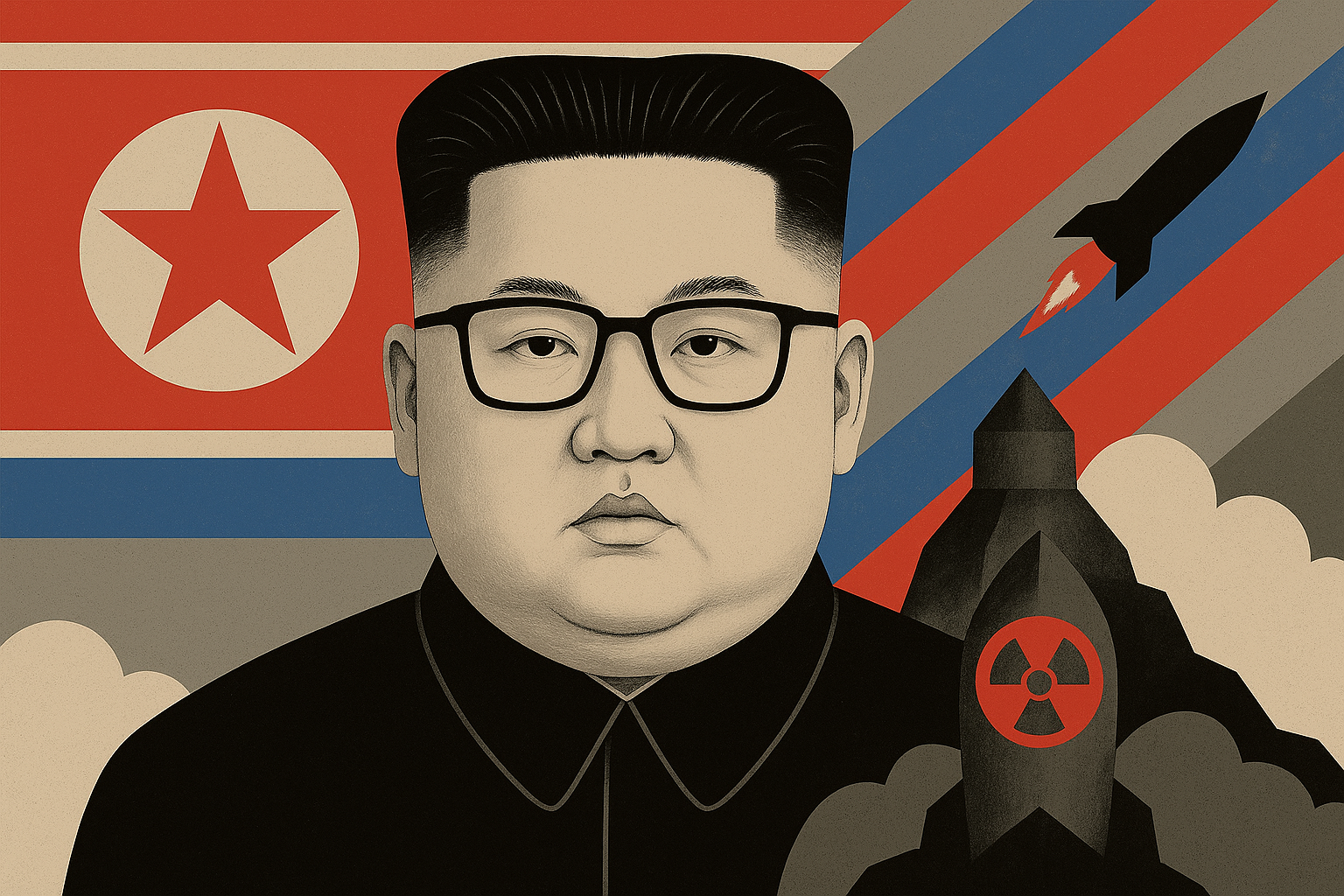
Inside the World’s Most Enduring Dictatorship
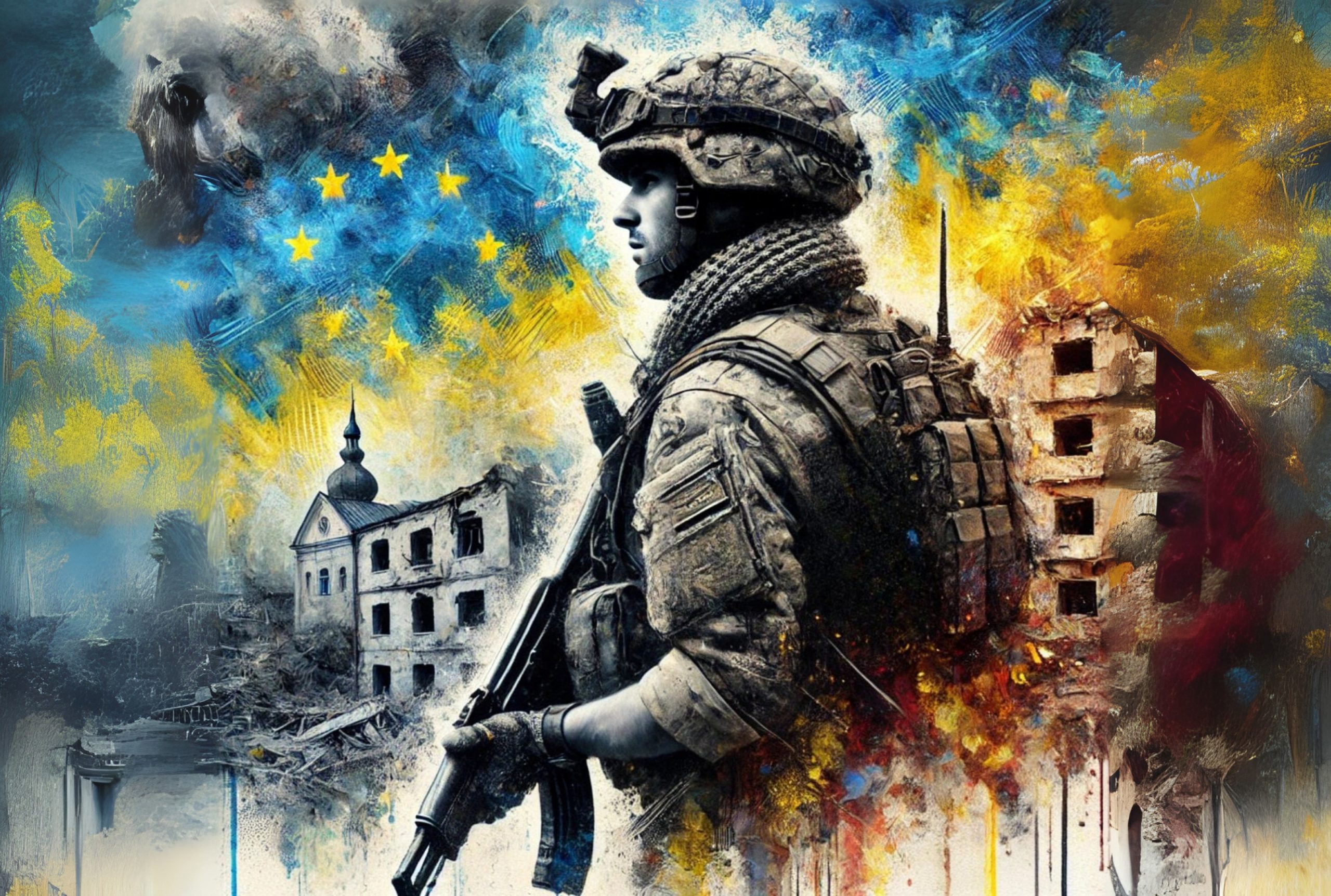
How the War in Ukraine Redefined Europe?
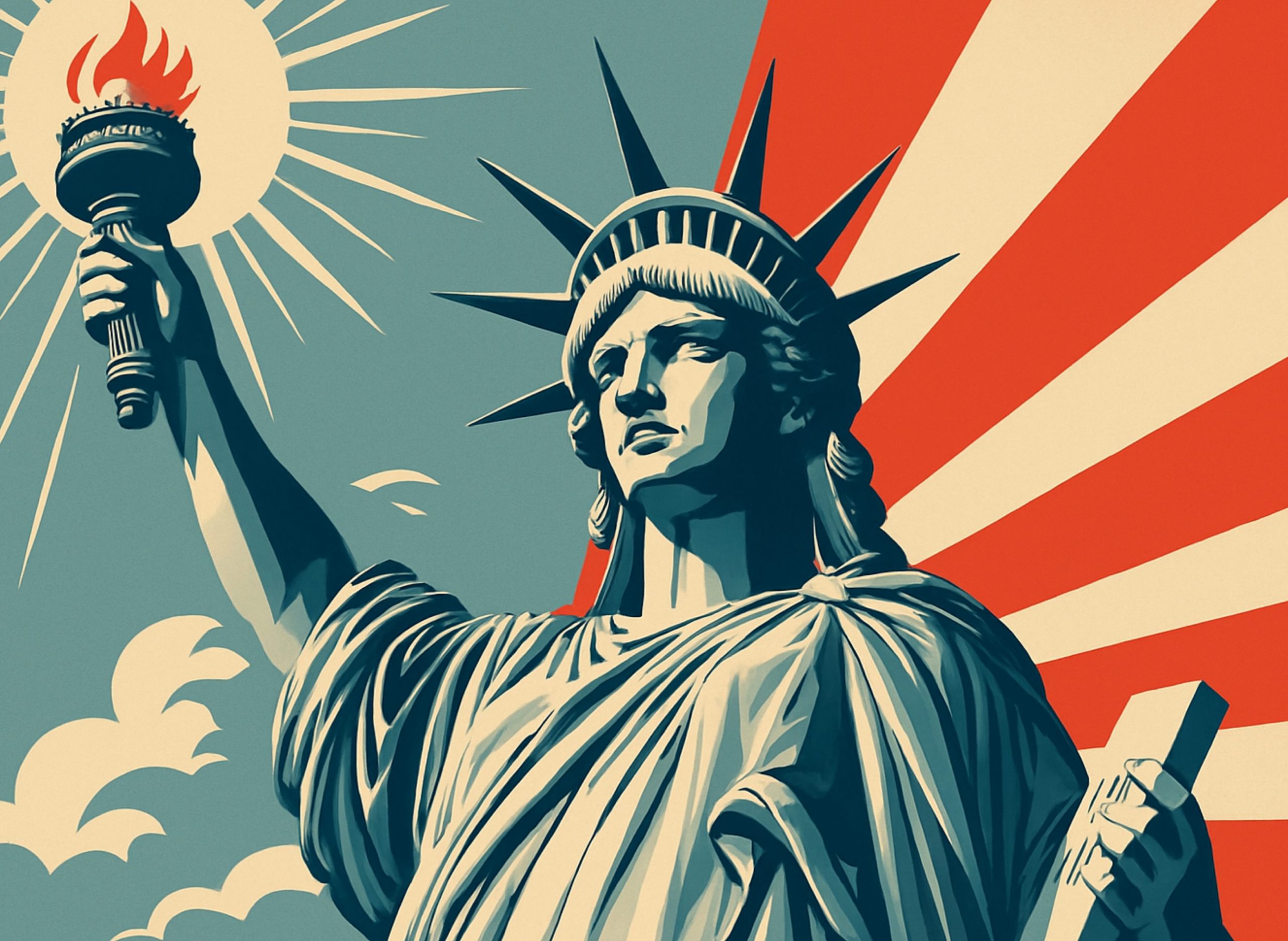
The Wilsonian Mission Never Ends
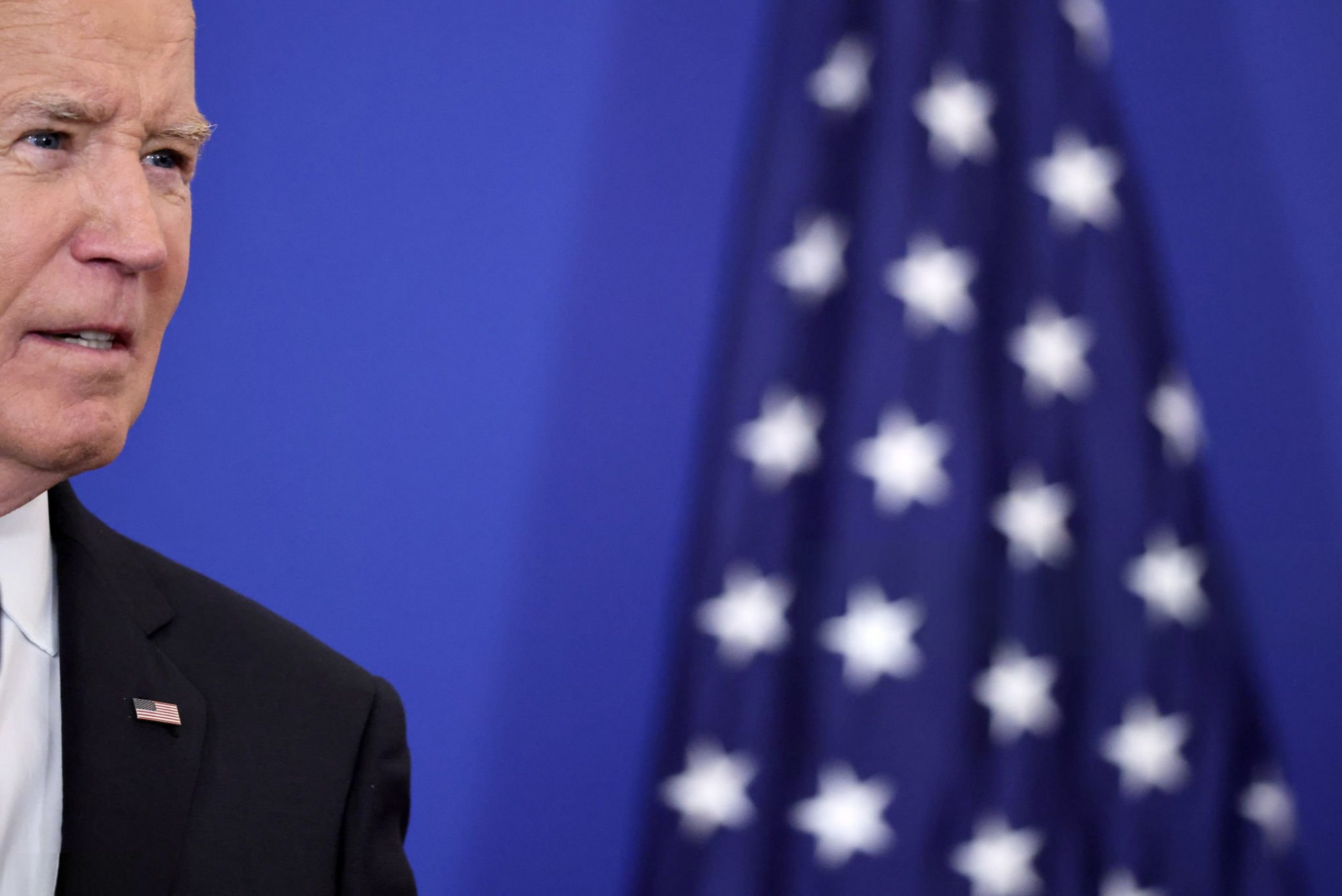
Rethinking U.S. Strategy on China
